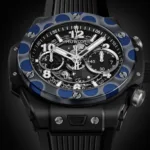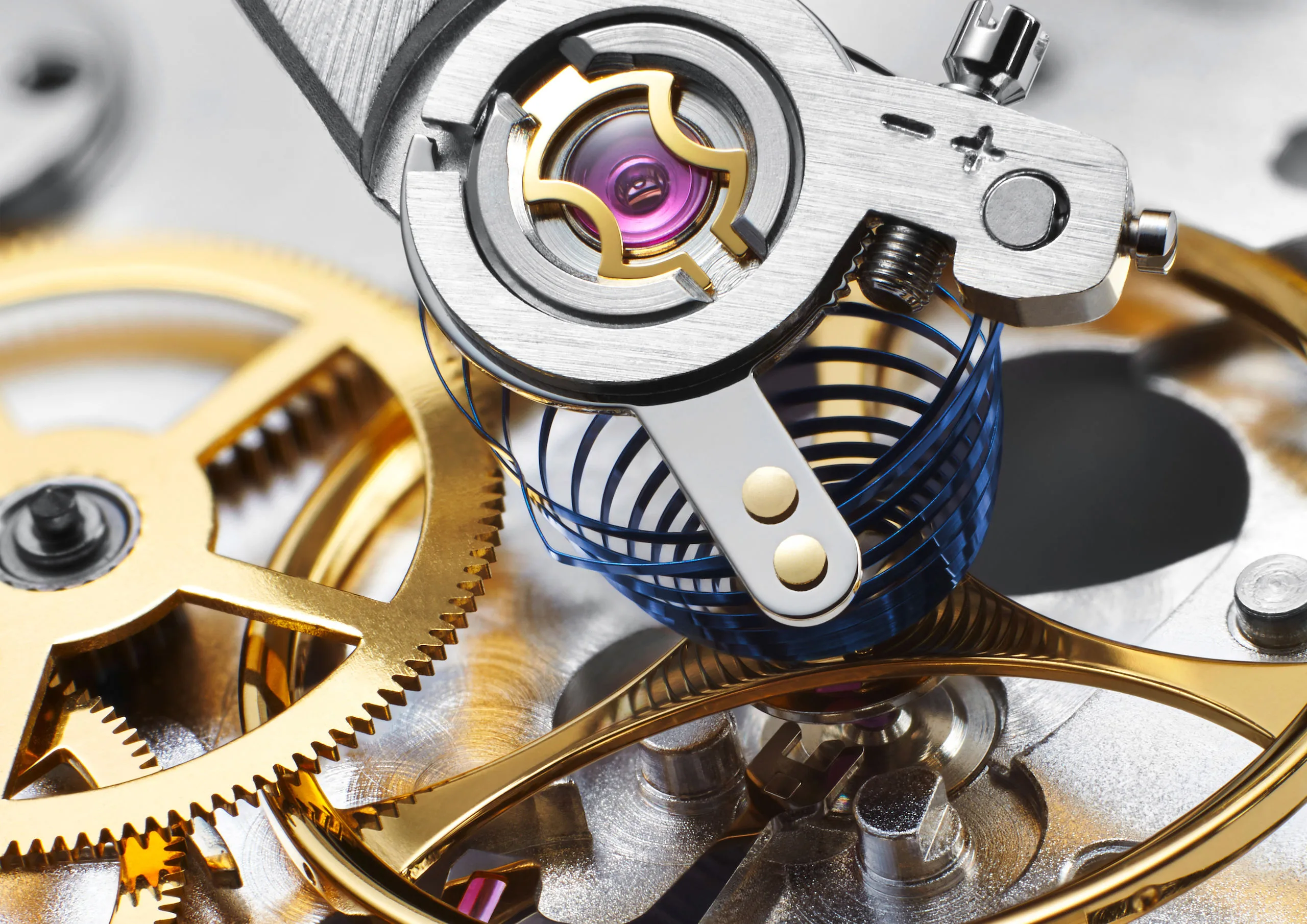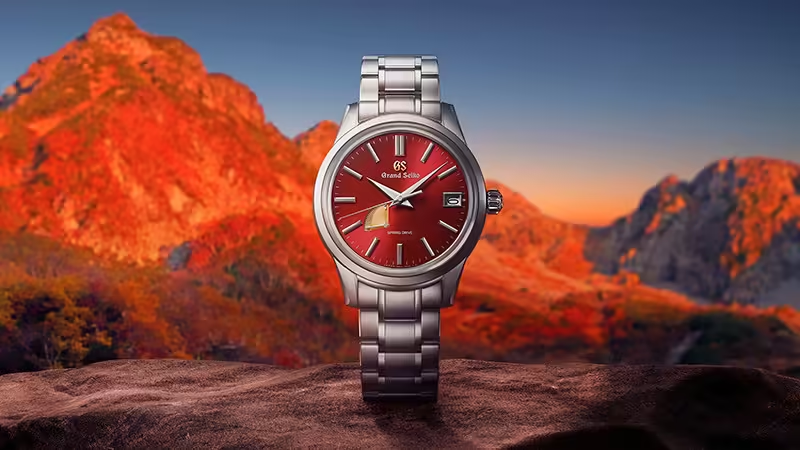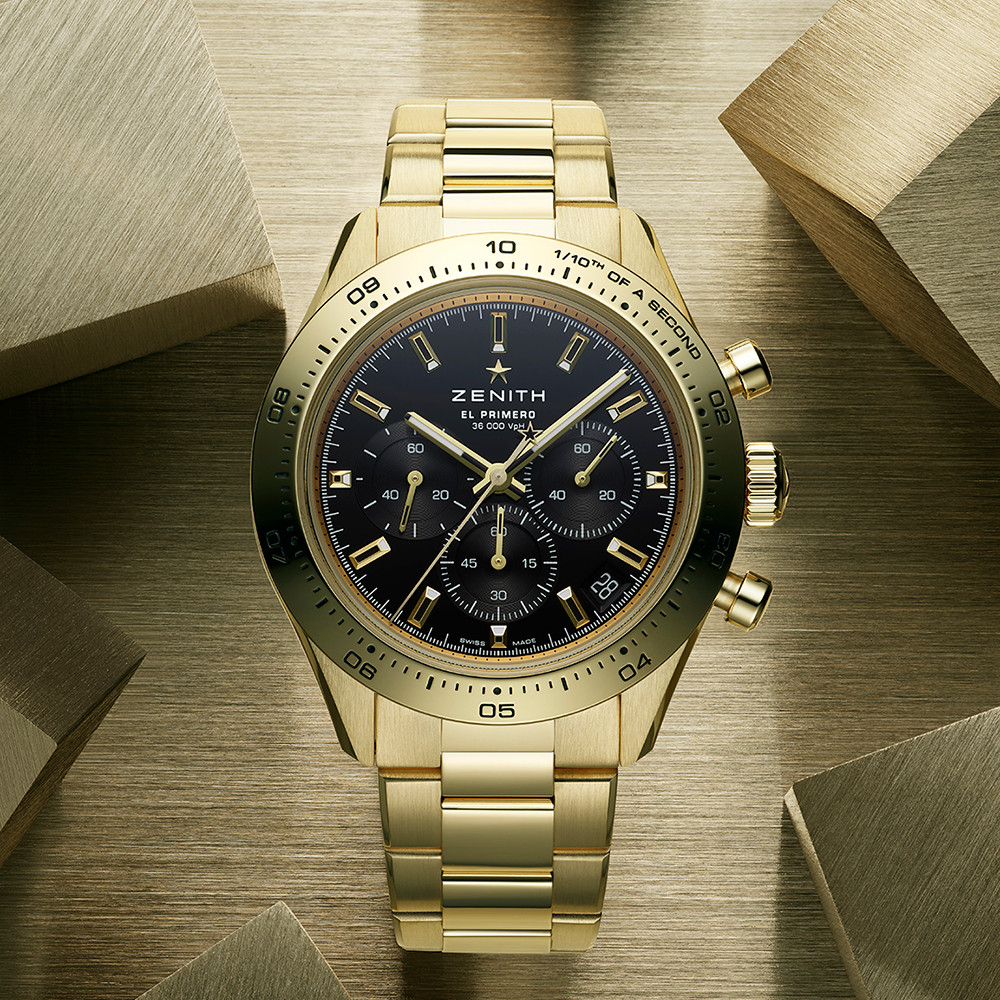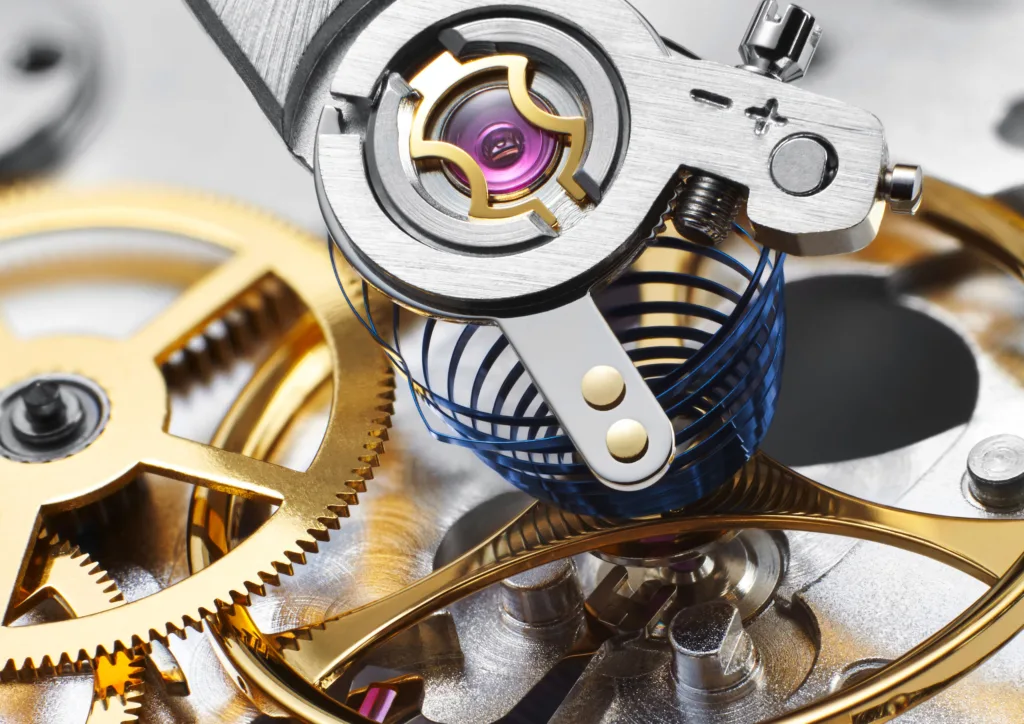
Automatic watches are a marvel of mechanical engineering, combining centuries-old horological techniques with modern precision. They utilize the movement of the wearer’s wrist to wind the mainspring, eliminating the need for manual winding while retaining the craftsmanship of a traditional mechanical watch. This guide will delve deeper into the technical workings of an automatic watch, explaining each component and how it contributes to the overall functionality.
1. The Rotor: The Core of the Self-Winding Mechanism
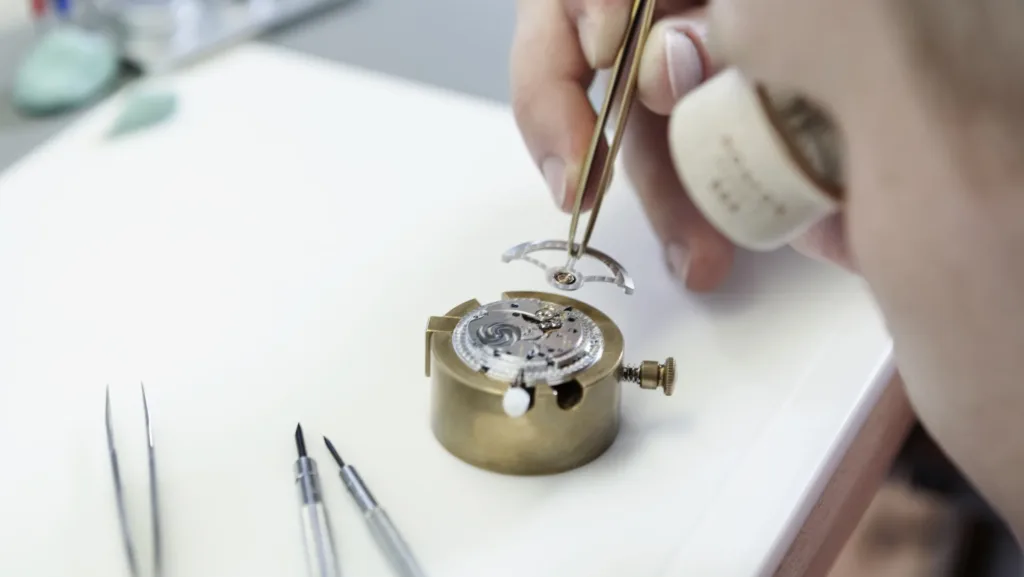
The rotor is a semicircular metal weight, often crafted from a dense material like tungsten or gold, attached to the movement via a central pivot. Its primary function is to convert kinetic energy—generated by wrist movement—into mechanical energy. The rotor rotates freely in both directions on its axis, driven by the wearer’s motion. This rotation winds the mainspring through a gear train system, eliminating the need for manual winding.
In many high-end watches, the rotor is placed on ball bearings or jeweled pivots to reduce friction and increase efficiency. Some movements, like those from Rolex’s famous Caliber 3135, utilize a bi-directional winding rotor, meaning it winds the mainspring regardless of the direction in which the rotor spins. Others, like ETA’s Caliber 2824-2, use a uni-directional winding system, where the rotor only winds the mainspring in one direction.
2. The Mainspring: Energy Storage and Release
The mainspring is a coiled strip of metal, typically made from a durable alloy such as Nivaflex or Elinvar, located within a barrel. As the rotor spins, it winds the mainspring tighter, storing potential energy. The barrel is equipped with teeth on its outer edge, which engage with the gear train to regulate the release of this energy.
The length and material of the mainspring directly affect the watch’s power reserve—the amount of time the watch can run after being fully wound. Modern materials, such as silicon or specialized alloys, allow for greater flexibility and resilience, improving power reserve. A typical power reserve ranges from 38 hours in entry-level movements to upwards of 80 hours in more advanced calibers.
3. The Gear Train: Precision Energy Transfer
The gear train is a series of gears that transmits the stored energy from the mainspring to the escapement in a controlled manner. This transmission must reduce the high tension of the mainspring while ensuring that the energy reaches the escapement at a consistent rate. The gears are arranged in several stages, starting from the barrel, which houses the mainspring.
- Barrel Gear: The first gear in the train, which transfers energy directly from the mainspring.
- Center Wheel: Usually mounted in the center of the movement, it revolves once every hour and drives the minute hand.
- Third Wheel: This gear transmits the energy from the center wheel to the fourth wheel.
- Fourth Wheel: This gear drives the second hand and typically completes one full revolution per minute.
- Escape Wheel: The final gear in the train that interacts with the escapement mechanism.
The reduction ratio between these gears ensures that the second, minute, and hour hands move at their respective speeds.
4. The Escapement: Controlled Energy Release
The escapement is the heart of time regulation in an automatic watch. Its primary role is to release the energy from the gear train to the balance wheel in precise increments, allowing the watch to “tick” at regular intervals. The most common type of escapement found in automatic watches is the Swiss lever escapement, which consists of several key components:
- Escape Wheel: Receives energy from the gear train and passes it to the lever.
- Lever (Pallet Fork): A T-shaped component with two synthetic ruby stones (called pallets) at the ends. These pallets alternately lock and unlock the escape wheel, allowing it to advance one tooth at a time.
- Fork Horns: Located at the end of the lever, they interact with the impulse pin on the balance wheel to transfer energy.
Each time the escapement unlocks, it transfers a precise amount of energy to the balance wheel. This process happens many times per second, depending on the watch’s beat rate. For example, a standard beat rate of 28,800 vibrations per hour (vph) results in 8 beats (or ticks) per second, producing the characteristic smooth sweep of the second hand.
5. The Balance Wheel and Hairspring: Governing Timekeeping Precision
The balance wheel is a weighted wheel that oscillates back and forth, regulating the release of energy from the escapement. Attached to the balance wheel is the hairspring (also called the balance spring), a delicate, tightly coiled spring that ensures the balance wheel oscillates at a consistent frequency. The balance wheel and hairspring together form a harmonic oscillator, which is responsible for maintaining the watch’s accuracy.
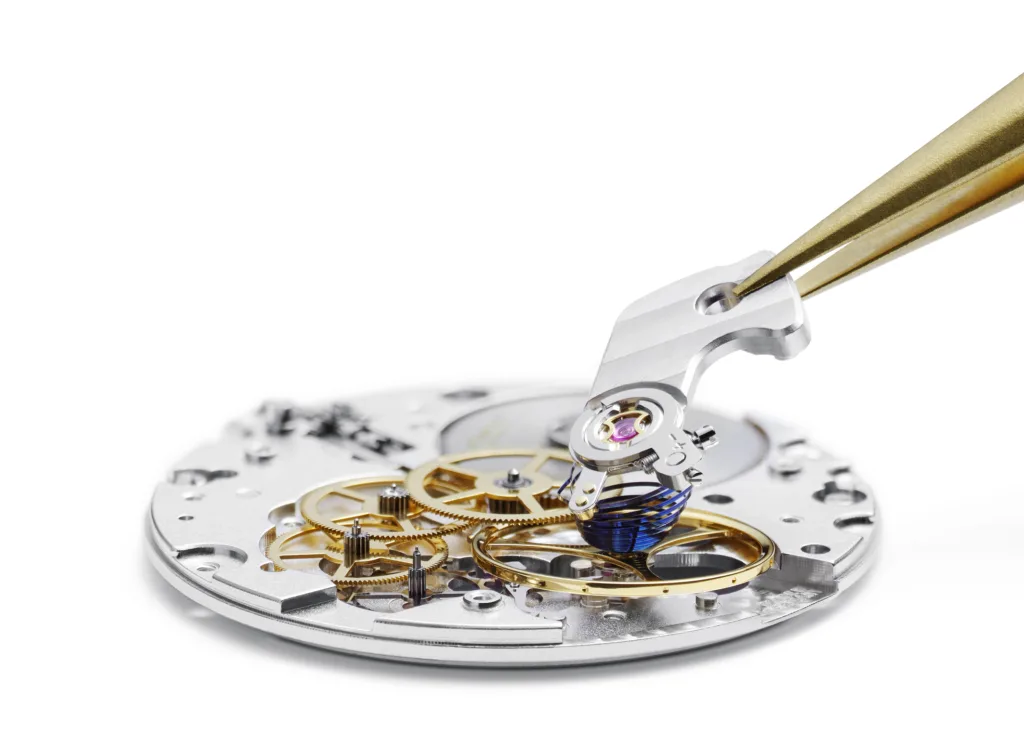
The frequency of oscillation is referred to as the beat rate or frequency, measured in vibrations per hour (vph). Common beat rates include 18,000 vph (5 ticks per second), 21,600 vph (6 ticks per second), and 28,800 vph (8 ticks per second). Some high-performance movements, like the Zenith El Primero, operate at a high beat rate of 36,000 vph, allowing for even more precise timekeeping.
To improve accuracy, many modern watches feature an adjustable balance spring or a free-sprung balance, which eliminates the need for a regulator to adjust the rate. These high-precision systems ensure that the watch remains accurate even under varying environmental conditions, such as changes in temperature or magnetic fields.
6. The Dial Train: Translating Energy to Time Display
The dial train is the set of gears responsible for transmitting energy from the gear train to the hands on the watch dial. It includes the minute wheel, hour wheel, and second wheel, which correspond to the respective hands on the dial. These gears must work in perfect harmony to display the correct time.
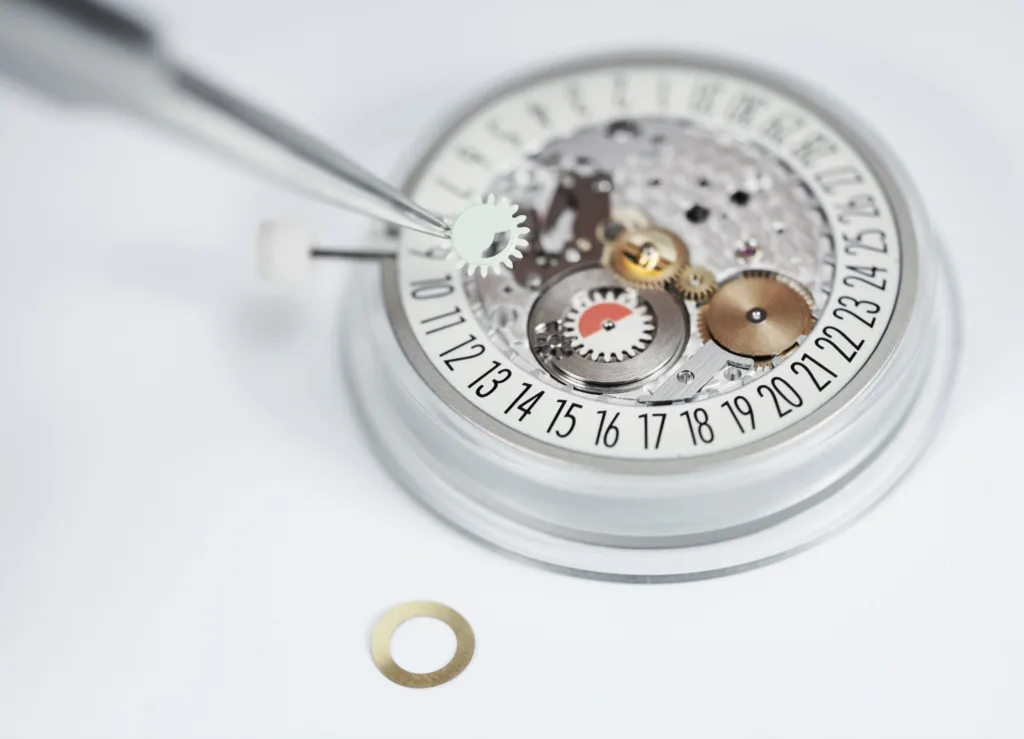
In many high-end watches, the seconds hand moves in a smooth, sweeping motion due to the high beat rate of the movement. However, the second hand is technically not “sweeping,” but rather moving in very small increments at a rapid pace, determined by the escapement.
7. The Jewels: Reducing Friction and Wear
Watch movements often contain synthetic jewels—usually rubies—placed at pivot points to reduce friction between metal parts. These jewels are strategically placed in areas where high-precision movement and minimal wear are required, such as the pivots of the balance wheel, escape wheel, and gear train.
A typical automatic watch has around 17 jewels, but more complex movements, especially those with complications, can have upwards of 30 jewels. The use of jewels helps to prolong the lifespan of the movement by minimizing wear and ensuring smoother operation of the moving parts.
8. Power Reserve: How Long It Runs Without Motion
The power reserve of an automatic watch refers to how long it will continue to run once fully wound, even when it is not being worn. A fully wound mainspring will typically power a watch for 38 to 80 hours, depending on the movement. The efficiency of the rotor, the material of the mainspring, and the gearing of the movement all contribute to the length of the power reserve.
Some high-end watches, such as those with twin-barrel systems (e.g., Jaeger-LeCoultre Master Control), can store more energy, resulting in extended power reserves of up to 8 to 10 days.
9. Maintenance: Ensuring Longevity and Accuracy
Automatic watches, being mechanical instruments, require regular maintenance to ensure their longevity and accuracy. Over time, the lubricants inside the movement can degrade, leading to increased friction and wear. Most manufacturers recommend servicing the watch every 3 to 5 years, depending on usage and environmental factors.
A typical service involves disassembling the movement, cleaning each component, replacing worn parts, reapplying lubricants, and calibrating the timekeeping accuracy.
An automatic watch is a symphony of mechanical precision, where every component plays a critical role in maintaining accurate timekeeping. From the energy-harvesting rotor to the regulating escapement and the intricacies of the balance wheel, each element works in harmony to create a self-sustaining timepiece. For enthusiasts, understanding this process deepens the connection to the rich history of horology and the engineering brilliance that goes into every automatic movement.
